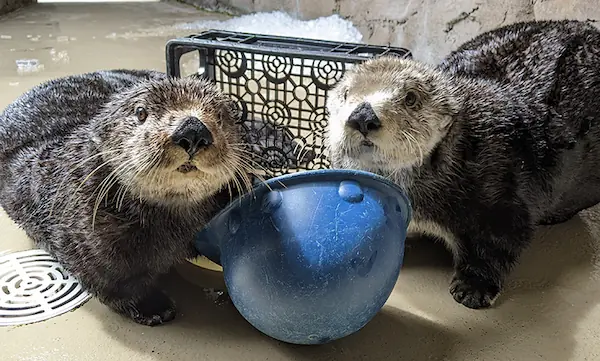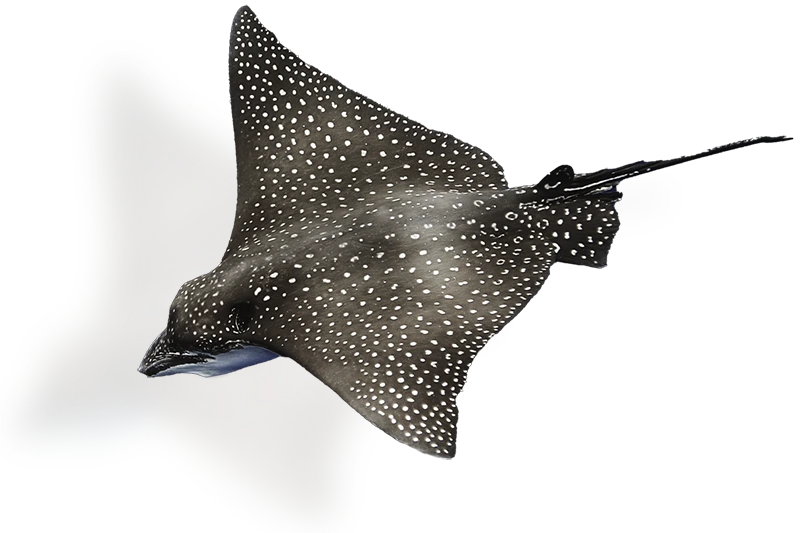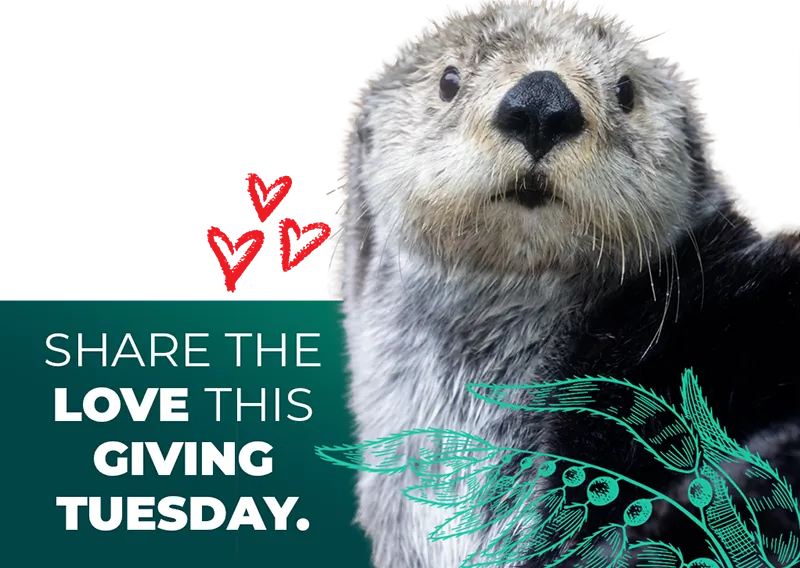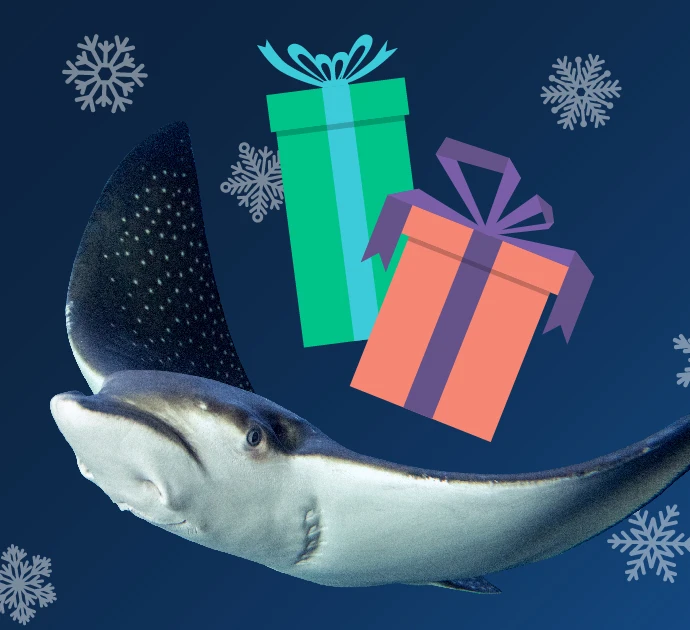Why is the Seattle Aquarium bringing tropical ecosystems to people in Seattle? After all, the Pacific Northwest, our own backyard, is home to vibrant and diverse marine life.
That’s certainly true. What’s also true is that ocean health is part of a bigger picture. Actions by people in other parts of the world impact our local waters and the animals who live there. And what we do here affects animals and waters far away.
Regenerating a healthy ocean begins with understanding how one ocean connects us all.
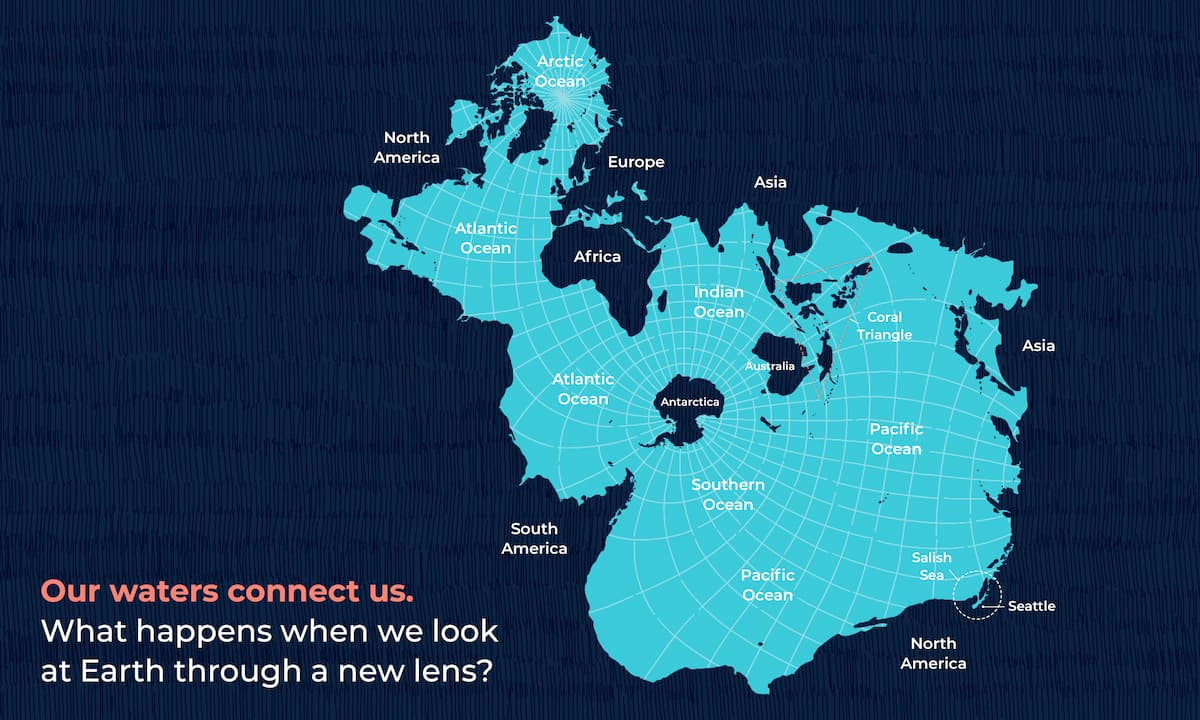
In school, many of us learned about five oceans or seven seas. A mind-bending image called the Spilhaus Projection shows us another way of looking at the blue planet. It focuses our gaze on one connected ocean, a place where animals move freely across vast, borderless waters. Can you spot home on this map?
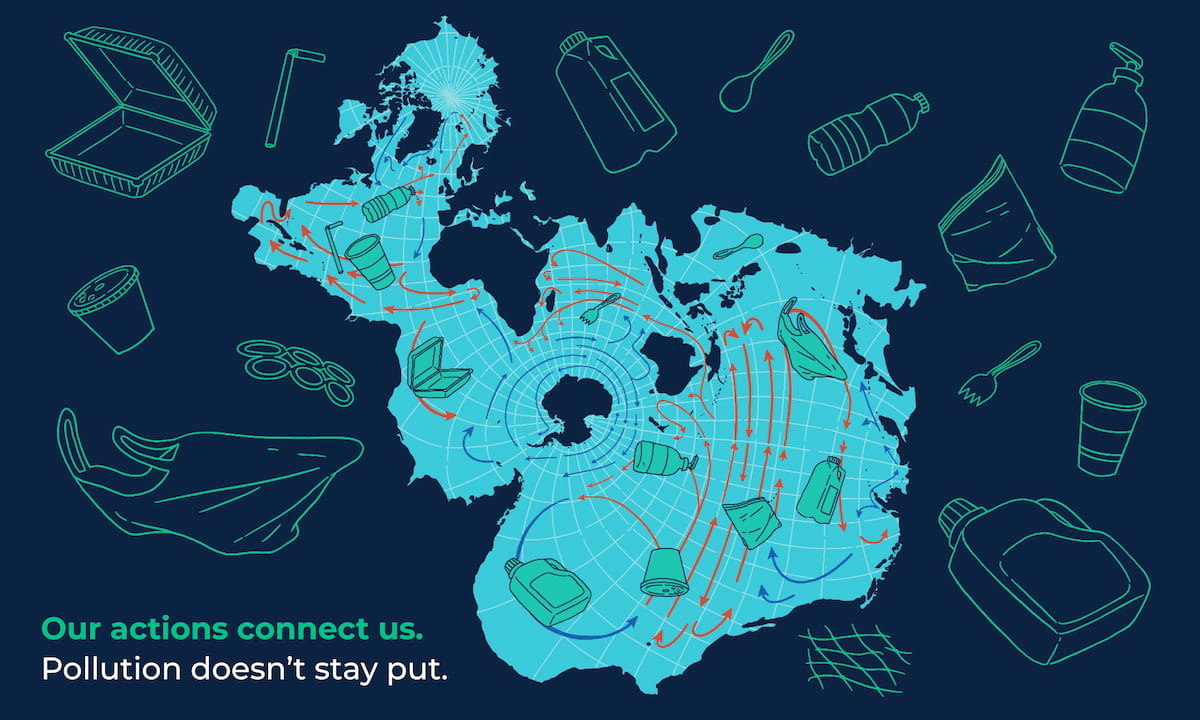
Scientists have identified human-made chemicals and plastic debris in the deepest, most inaccessible parts of the ocean, ferried there by a complex system of currents. What’s more, the carbon we emit into the atmosphere makes the ocean warmer and more acidic everywhere. How we live and the actions of our businesses and governments affect the health of our entire planet.
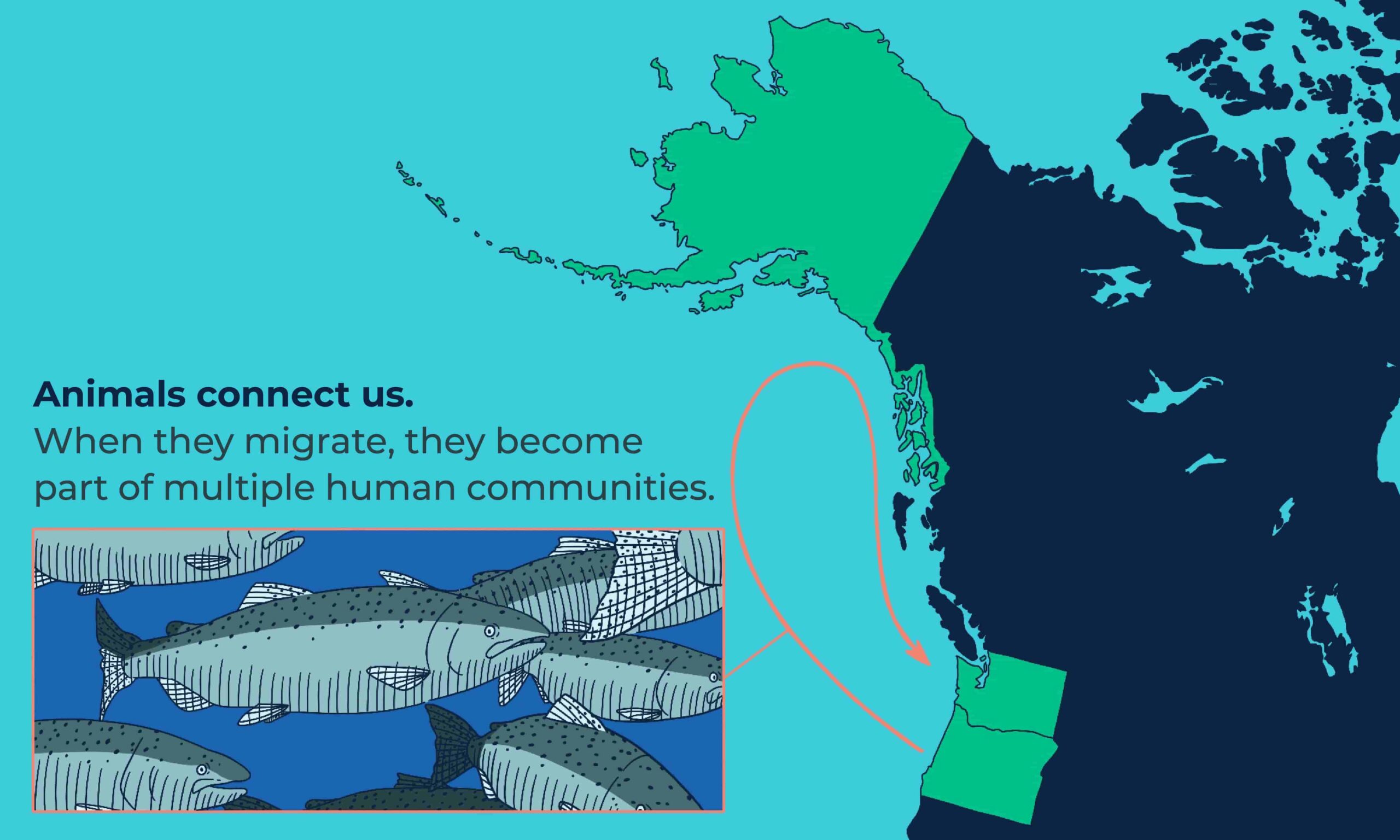
Marine animals hold cultural and economic importance to people in multiple regions. For example, some “Alaskan wild-caught” salmon spawned in Washington streams (or hatcheries) just a few years earlier. Policies to protect salmon here also protect the livelihoods of people in Alaska. And likewise, how fishing is managed in Alaska affects salmon populations here and local animals that feed on them, including critically endangered southern resident orcas. As climate change drives some animals into unfamiliar waters, new communities will join their network of stewards. Now consider how these ideas apply to an animal with a huge migratory range, like a humpback whale! Some humpback whales can migrate 3,000 miles, from the waters off Alaska to the waters of Hawaiߵi. Imagine all the other ecosystems and communities they touch!
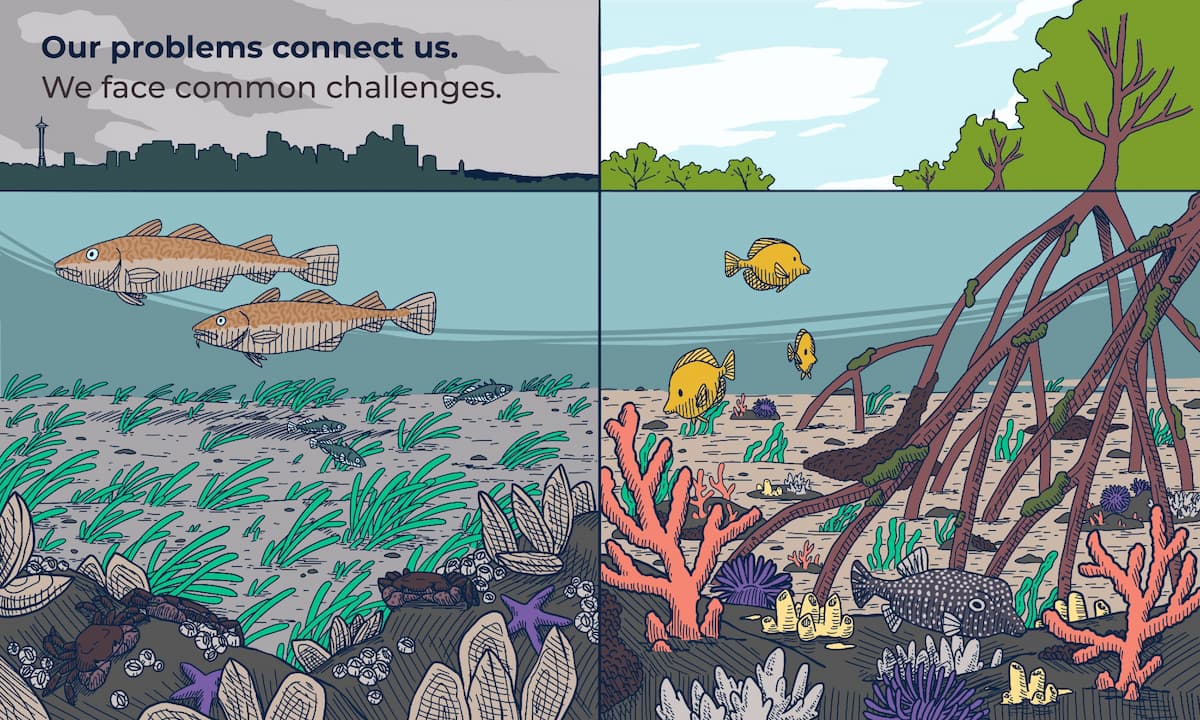
Like the Salish Sea, the Coral Triangle is a place of beauty and biodiversity. Because of the number and variety of species in the Coral Triangle, some people call it the “Amazon rainforest” of the ocean. Sadly, in both the Salish Sea and Coral Triangle, overfishing, pollution, development and climate change are taking a heavy toll. We’re losing iconic animals (like orcas and whale sharks), habitats that serve as fish nurseries (like eelgrass and mangrove forests) and important species that are sensitive to changes in ocean acidity (like oysters and coral reefs). We have much more in common than it might seem.
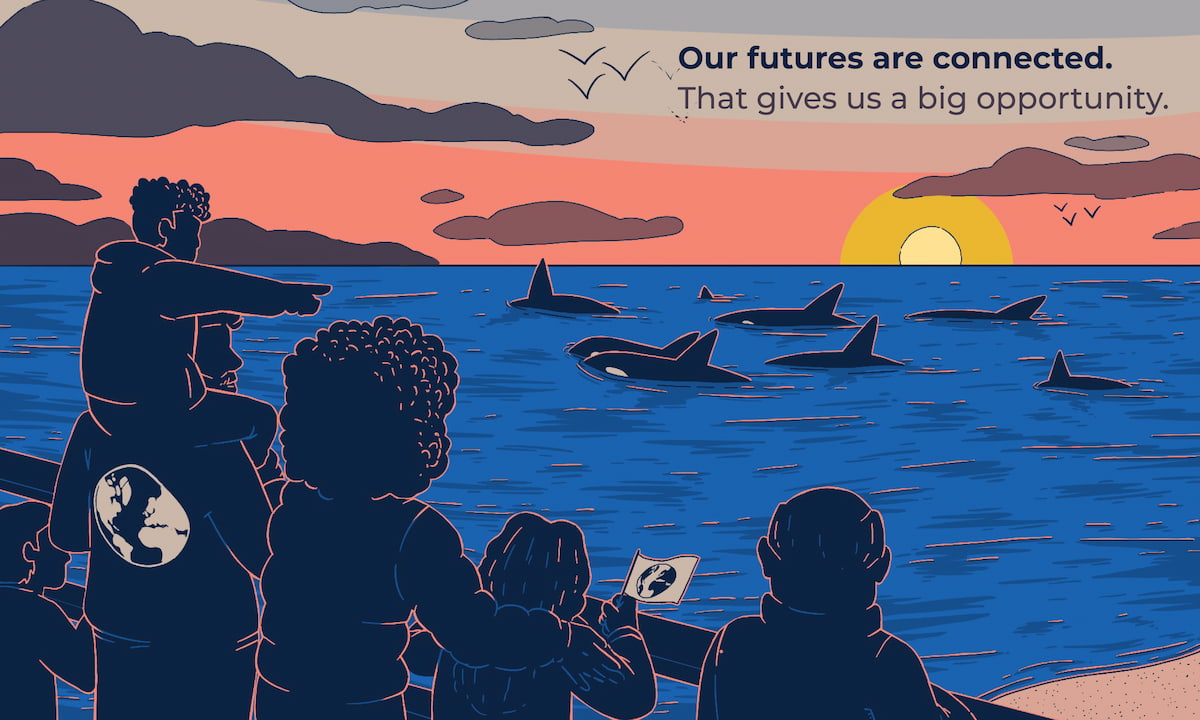
Shared problems can mean shared solutions—and hope. Did you know that governments in all six Coral Triangle countries—Indonesia, Malaysia, the Philippines, Papua New Guinea, Timor Leste and the Solomon Islands—have established marine protected areas that strictly manage human activities? Similarly, the Olympic Coast National Marine Sanctuary helps animals off the coast of Washington thrive. Bans on lightweight plastic bags, a major contributor to ocean pollution, have flourished in recent years. In addition to states like Washington, countries including Botswana, Haiti, Morocco, New Zealand and dozens of others have banned them. Rewilding initiatives—like ReShark, which was cofounded by the Seattle Aquarium and has 90+ global partners—are breeding and restoring wild populations of threatened species. Young people, including the Seattle Aquarium’s Youth Ocean Advocates, are making their voices heard worldwide. Indigenous communities around the world are playing leading roles in the climate justice movement. Looking for a way into this work? There are many. Find an effort that excites you and get involved.
Make new connections
When the Aquarium’s new Ocean Pavilion opens in 2024, you’ll be able to explore habitats that reflect the exquisite biodiversity of the Coral Triangle and the precious animals there. You’ll hear stories about leaders who are making a difference in ocean health. And get ready to join them!
